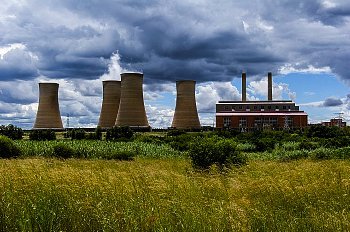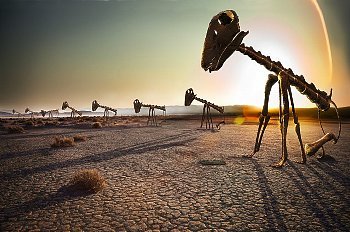
Date: 2024-07-17 Page is: DBtxt003.php txt00005941
RESOURCE EXTRACTION / ENERGY
WHO IS RESPONSIBLE?
John Elkington: Breaking Free From Our Carbon Entanglement and a Dinosaur Industry ... Willingly or not, asset holders, governments and corporations will have to face the facts on carbon emissions.
WHO IS RESPONSIBLE?
John Elkington: Breaking Free From Our Carbon Entanglement and a Dinosaur Industry ... Willingly or not, asset holders, governments and corporations will have to face the facts on carbon emissions.

Original article: http://www.csrwire.com/blog/posts/1097-breaking-free-from-our-carbon-entanglement-and-a-dinosaur-industry
Peter Burgess COMMENTARY
Peter Burgess
Willingly or not, asset holders, governments and corporations will have to face the facts on carbon emissions, says a leading economist.
Written by John Elkington ... CSR Wire ... CSRwire Talkback
Posted: Nov 08, 2013 – 09:45 AM EST
As I head off to Colombia, I have been thinking of the mining industry, a key contributor to the country’s economy. Threats to the industry come in many forms. Some are explosive, as when Colombia's biggest coal producer, Cerrejon (the joint venture between mining giants Anglo American, BHP Billiton and Xstrata), reported that a bomb attack on its railway had partially derailed a train carrying coal destined for export. Carried out by FARC, this was the latest in a series of explosions targeting oil and gas pipelines.
For the global fossil fuels business, these are little more than pinpricks, but days earlier my home city of London had heard a speech that sketched out an existential threat to fossil fuels – and to the coal industry in particular.

In a remarkable milestone, the Mexican economist diplomat José Angel Gurría spoke out as secretary-general of the OECD – sketching a future that should have the global coal industry shaking in its boots. His message iscoal-cooling-towers that we need to achieve net zero emissions of carbon dioxide emissions, to which the coal industry is a massive contributor, by the second half of the century.
Risk Management of Climate Change Complex
He stressed, “It would be hard to imagine a more complex risk management issue than that posed by climate change.” But he underscored the growing cost of climate-related disasters. A single storm, Hurricane Sandy, cost about $75 billion, for example, or 0.5 percent of US GDP in 2011.
More positively, he recalled that the world has recently managed its way around another huge risk, the financial crisis. The cost to the US economy alone is calculated to have been at least $22 trillion. Unemployment in OECD countries stands at 49 million people, or around 8 percent of the working age population—and it is 16 percent on average for those under 24. But, as he continued to say, if you had asked those who ran the financial system “that led to this train wreck” a few years – or even months – before the crisis hit whether they were happy running this level of risk, they would have answered no. But “the risks were either not understood or ignored.”
With 2015 slated to see the next major climate summit, in Paris, political leaders have a shrinking window of opportunity to get a grip on the biggest global crisis of all. The latest report of the International Panel on Climate Change, released on 27 September, stresses the existential threat to key parts of our global economy—with the level of warming now outside anything seen in the history of civilization.
A Global Zero Emissions Strategy Lacking
The answer? “Whatever policy mix we cook up,” Angel Gurría insisted, “it has to be one that leads to the complete elimination of emissions to the atmosphere from the combustion of fossil fuels in the secondcarbon-emissions half of the century.”
The OECD is now calling for a global zero emissions strategy. While this might sound extreme, we really have no option. Carbon dioxide is a long-lived gas. Of one ton of the gas emitted in 2013, for example, over 60 percent will still be in the atmosphere 20 years from now, and 45 percent 100 years from now. Some of it will be around for thousands of years.
But after over 20 years of growing concern and policy experimentation, the world is nowhere near the sort of trajectory that would get us to zero emissions this century. And climate change is by no means the only major problem linked to fossil fuels. In China, for example, 1.2 million people die prematurely each year because of their exposure to outdoor air pollution.
Coal Constrained
The expectation that the availability of fossil fuels would peak and fall away has been overturned by the boom in fracking and natural gas production in the USA, a trend likely to spread to other parts of the world. Meanwhile, no less than 1,200 new coal-fired power plants are at the planning stage in different parts of the world. However, recent developments both in the USA and in Europe suggest that a growing proportion of such plants will be closed down, or never built.
The combination of fracked gas and new emission standards are cutting the appetite for coal-fired power in the US, while European energy utilities like RWE are in a state of crisis as the growth of renewable energy in Germany undermines the case for coal-fired power.

Asset Holders Loathe to Face Carbon Risks
The OECD knows that the incumbent industries will resist the necessary changes—and this will not just be the fossil fuel producers. The Asset Owners Disclosure Project estimates that an average of over 55 percent of pension funds’ portfolios are currently invested in high carbon assets – or in sectors that are vulnerable to future climate change and the associated regulations.
This is one part of the “carbon entanglement” that Angel Gurría spotlights as a key barrier to political progress. As he explained, “governments everywhere, on behalf of their citizens, have major stakes in bringing fossil fuels to market and taking their share of the rents.” OECD governmentsfossil-fuel-dinosaur alone receive an estimated $200 billion a year from such royalty payments, taxes and other revenues. So it is a bit like asking drug addicts to clean up the drug industry.
Angel Gurría ended by asking two hard questions: first, should governments impose a moratorium on new coal-fired power stations and, second, should they insist that all new coal-fired power stations be designed so that they can be fitted with (very expensive) carbon capture and storage equipment? These proposals may not have quite the same explosive impact on Colombia’s mining industry as a FARC bomb, but as global warming turns up the heat under the world’s politicians coal increasingly looks like a dinosaur industry.